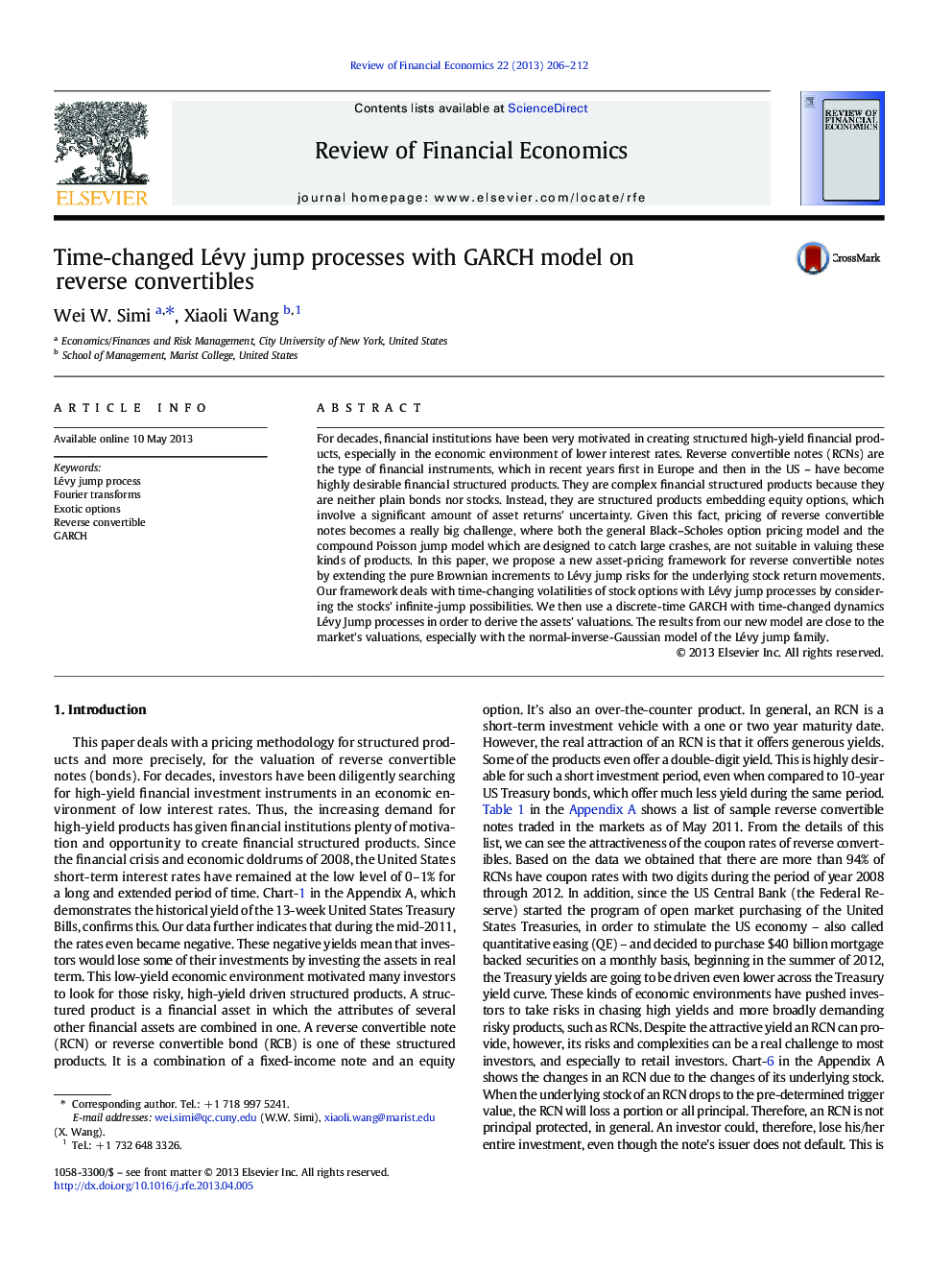| Article ID | Journal | Published Year | Pages | File Type |
|---|---|---|---|---|
| 986872 | Review of Financial Economics | 2013 | 7 Pages |
For decades, financial institutions have been very motivated in creating structured high-yield financial products, especially in the economic environment of lower interest rates. Reverse convertible notes (RCNs) are the type of financial instruments, which in recent years first in Europe and then in the US – have become highly desirable financial structured products. They are complex financial structured products because they are neither plain bonds nor stocks. Instead, they are structured products embedding equity options, which involve a significant amount of asset returns' uncertainty. Given this fact, pricing of reverse convertible notes becomes a really big challenge, where both the general Black–Scholes option pricing model and the compound Poisson jump model which are designed to catch large crashes, are not suitable in valuing these kinds of products. In this paper, we propose a new asset-pricing framework for reverse convertible notes by extending the pure Brownian increments to Lévy jump risks for the underlying stock return movements. Our framework deals with time-changing volatilities of stock options with Lévy jump processes by considering the stocks' infinite-jump possibilities. We then use a discrete-time GARCH with time-changed dynamics Lévy Jump processes in order to derive the assets' valuations. The results from our new model are close to the market's valuations, especially with the normal-inverse-Gaussian model of the Lévy jump family.
